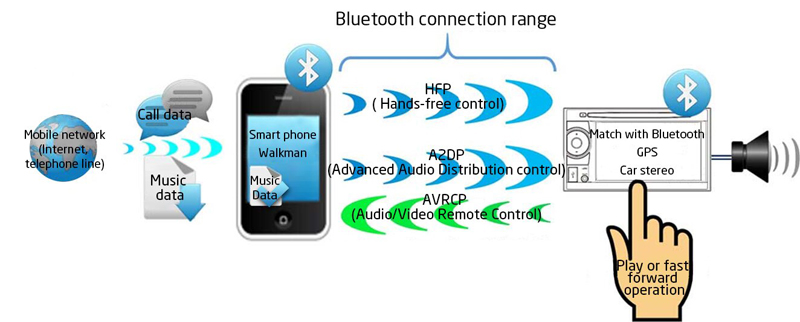Professional Technology Domain
IT technology is developing rapidly worldwide. While studying innovative technologies, we focus on clients and strive to acquire technologies the market needs to deeply enhance our engineering capabilities.
The lean engineer team composed of key employees from all business lines concentrates on investigating new technologies, new products and new standards to improve test service quality and business undertaking capabilities.
- Specialize in business-based technology knowledge and skills in specific domains
- Research in strategic core technology and methods
- Help implement testing with better thinking modes, techniques and tools
3A(auto-exposure (AE), auto-focus (AF), auto-white balance (AWB) )
In professional testing studios, Neusoft Imaging Test Center uses hundreds of special testing instruments, such as LCD light sources with adjustable temperature, standard test light boxes, standard test color plates, and professional waveform displays, to test cameras’ AE/AF/AWB functions and to compare them with other models in a bid to determine the correctness and performance of these functional actions. Basing on the “samples” of all camera models, we test their actions and performance under various light source environments to find problems from the user perspective. The testing results can help developers correct parameters and thus improve the usability and convenience of cameras.
Bluetooth
As a global specification for wireless data and voice communication, Bluetooth technology features convenience, rapidness, flexibility, safety, low costs, and low power consumption. Thus, it has been deeply favored in the automotive industry with wide application in in-vehicle systems. In an on-board system, Bluetooth technology is mainly used for the data and voice communication between the cellphone and the vehicle, with the aim of liberating the driver’s hands and reducing the hidden driving dangers. With the development of communication connection technology, there will gradually rise more functions that support the use of Bluetooth protocol in vehicles and more Bluetooth protocols to be used by the vehicles with the increased functions, and Bluetooth technology will keep providing stable, convenient, and rapid technological support for in-vehicle systems.

Main application scenarios in in-vehicle systems:
- When a driver connects his/her cellphone with the vehicle via Bluetooth, different Bluetooth protocols will enable the operations of making and receiving calls, sending and receiving Mails, transmitting telephone directories, and playing music.
Commonly used Bluetooth protocols types in in-vehicle systems:
- HFP (HANDS-FREE PROFILE): used to make and receive calls via the vehicle panel.
- OPP (OBJECT PUSH PROFILE): used for data exchange between the cellphone and the vehicle. E.g.: Transmitting telephone directories.
- PBAP (PHONE BOOK ACCESS PROFILE): used for data exchange between the cellphone and the vehicle. E.g.: transmitting telephone directories and images.
- MAP (MESSAGE ACCESS PROFILE): used for receiving and transmitting Messages.
- A2DP (ADVANCED AUDIO DISTRIBUTION PROFILE): used to transmit music files and information on the cellphone side.
- AVRCP (AUDIO/VIDEO REMOTE CONTROL PROFILE): used for the operations to control music data. E.g.: playback, pause, previous, next, fast forward, and fast backward.
Input and Output of Can Signals and Linear Signals
In a dashboard system test, the actions of the dashboard are mainly completed by receiving the CAN signals from other ECUs and the level signals. So, CAN signal simulation software and a voltage and current signal generator are needed to simulate signal transmission. As for output, a precise instrument, like an oscilloscope, is needed to measure the action time and to ensure the accurate test results.
Analog Input of CAN Signals
Use CANalzyer, CANoe, KVASER and other CAN communication simulation tools to simulate the environment in the vehicle. Search corresponding signals in these tools and set signal transmission timing, cycle and other conditions to simulate the signals sent by other ECUs. And modify configuration files through CAPL programming to meet test needs and to reach test purposes.
Level Signal Input
Use a voltage and current signal generator or a rheostat to find the corresponding voltage input point according to the circuit diagram of the dashboard. Adjust the parameters of the voltage and current signal generator or the rheostat to meet the requirements of the product specifications on level signal input.
Waveform Obtaining by Oscilloscopes
The dashboard is the most direct channel for a driver to understand various information of the vehicle. The action switching of many alarm sounds, indicators, and screen displays requires millisecond responses, and the delay time of these actions needs to be strictly controlled within a certain range. So, a precise instrument, like an oscilloscope, is needed to measure and record the action time. Connect the oscilloscope to the dashboard at a point whose intercept waveform is needed. Adjust the parameters of the oscilloscope and intercept the waveform when alarm sounds, indicator lights and screen displays are acting. Then, all relevant CAN signals and level signals as well as their changes will be reflected in the waveform diagram. With the oscilloscope, we obtain such data as cycle, frequency and action time for the accurate measurement and recording.
Digital Broadcasting
Along with people’s continuous pursuit for higher-definition and higher-sound-quality digital broadcasting products, the requirements on digital products also become higher and higher. We have been consistently committed to studying the specifications and technologies in digital broadcasting. We offer professional testing to evaluate the comfort, convenience, and simplicity of various digital broadcasting products, like BDRE and TV, from the user perspective.
For product testing in this domain, we have expanded our researches outward from the core of our own specifications and formed a testing perspective with our own characteristics to meet the needs of the market and users.
- In terms of specifications of broadcasting technology, our testing scope covers the European DVB, the Japanese ISDB, and the Chinese DTMB. We can formulate the most suitable test method based on the transmission modes, practical conditions and requirements of different countries and regions.
- In terms of the Multimedia Transport method, whether for the MPEG2-TS that has been popular since 20 years ago or for the recently emerging MMT, we present the most precise test method through the differential analysis on the Stream distribution environment with two transmission channels (Singlepath transmission Channel Or Multi path transmission channels), the DataFormat with two transmission channels (Resolution, Audio's Channel Information) and others and through the processing mechanism of trusted devices.
- In terms of Digital Signal characteristics, through analyzing the principles and differences of Signal Type (Terrestrial, BS/CS, BS-4K/8K, CS-4K), channel Type (Event Share channel, Temporary Service, etc.), Program Type (CaPPV, pay program, etc. ), Encryption Method (A-Cas, B-Cas), Data Service (BML, Hybridcast...), etc., we can offer the test policies and strategies for the whole processes from design to FinalPKGTest in line with the software and hardware characteristics of tested products.
- In terms of data attributes, we test the elements of images and sounds, like the resolution, color gamut, color depth, HDR, and frame rate of images, and the CodeC (Dolby/DTS/AAC/MPEG, etc.), CH, FS, Bit number of sounds.And through coordinating with the data processing mechanism of the trusted device, we select the optimal data coverage to provide high-end audio and video testing solutions.
- In terms of peripheral auxiliary functions, including AI voice, smart home interconnection, multi-screen interaction, Remote appointment, YouTube, Netflix, Wasu, TencentVideo, etc., we provide test scenarios tailored to user tastes to evaluate the customer experience with high performance and simplicity from the user perspective.
- In terms of the features of tested businesses, we can analyze and sort out the difficulty degrees, focuses and all other elements related to test activities according to the complexity and code size of the software development. We can provide overall quality assurance policies for projects and the optimally efficient testing solutions from the perspective of independent testing.
- In terms of product carrying platforms, whether for the Linux-based embedded products or for the Android-based open source products, we boast 10-plus years of rich practical experience, well know the differences among all OSs, and can provide a wide range of testing service based on product features.
Digital Signal Imaging
With the advent of the information and intelligence age, we are surrounded by various kinds of information at all times, and every walk of life strives to develop high-resolution and high-definition digital transmission and imaging products, like high-definition home theaters, commercial cinemas, high-definition projectors and high-definition advertising screens. So the accurate testing for digital signals and their imaging on different applications have become increasingly important.
How to accurately test the systems related to digital signals?
We are committed to offering highly accurate testing for digital signals. In requirement analysis, we consider the following contents:
- Analysis on digital signal composition: deeply analyze signal composition to obtain data ranges of tests
E.g.: RGB565, RGB555, YUV4: 4: 4, YUV4: 2: 2, and YUV4: 2: 0.
- Analyze digital signal interfaces and obtain data combinations at each interface to improve the test coverage
E.g.: HDMI, DP, SDI, Network and other interface analysis
- Analysis on systems under test: analyze all aspects of the systems under test to verify their functions
E.g.: Conversion of input data, conversion of input Gamma , and correction of input grayscale and chroma.
- Carry out imaging display analysis of data on the imaging side to get the workflow of the system and then move on to the User process test.
The imaging test mainly checks whether the input data is transformed into images according to the preset workflow of the system.
Analyze the digital signal images to be tested and then integrate analysis results to generate test cases
During the generation of test cases, we adopt various techniques to design test cases, with the considerations on the comprehensive functions and the availability for full-life-cycle project testing.
Take smoke testing as an example: before the system testing, we test system stability and functional completeness according to the system analysis results. The results of the smoke testing will determine whether to start the system testing or not.
This integrated testing guarantees both the test coverage and the quality of the system under test.





















